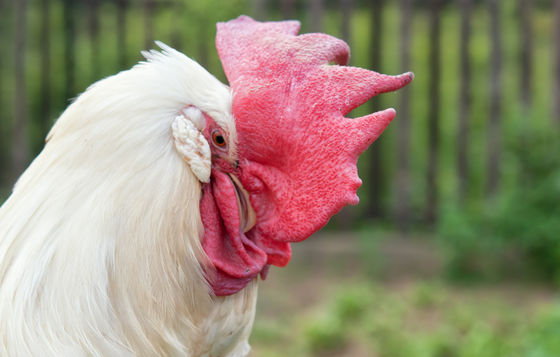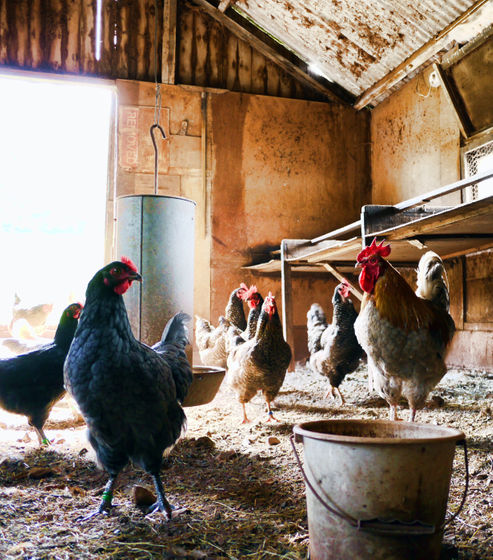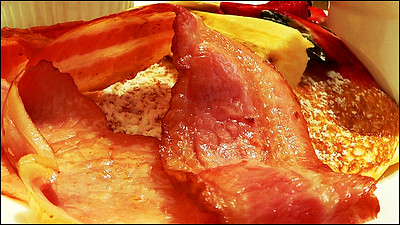How did the 'poultry industry' develop in the United States?

In recent years, chicken has been attracting attention as 'the healthiest and cheapest of all meats', but once the main purpose of raising chickens was to obtain eggs. The British big letter The Guardian explains the development of the poultry industry in the United States.
From farm to factory: the unstoppable rise of American chicken | Environment | The Guardian
Today, chicken eggs can be obtained all year round in supermarkets, but thanks to the development of a breeding method that keeps the same amount of light as in spring by illuminating it, chickens in the natural environment lay eggs from autumn to winter. Let's take a break . American poultry farming in the early 20th century was not intended for meat, and poultry farming was for egg collection, and chicken breeders raised hens because they could be used for egg collection among the chicks that were born in the spring. However, because roosters cannot be used for egg collection, they were slaughtered when they grew up to some extent. Because of this, a large amount of rooster meat was shipped in the spring, so young chicken meat is referred to as 'Spring chickens.'
According to Roger Horowitz, an expert on food history, the poultry industry at that time did not make any distinction about the age or breed of the chickens, and the chickens on the market are chicken meat in the spring or eggs. It was limited to the hen's meat that had been disposed of due to production surplus. It seems that chicken was expensive at that time, but this was due to the fact that the supply was low for the above reasons rather than the demand for chicken being high.

However, the public was encouraged to eat chicken and fish following the fact that beef, pork, lamb, etc. were distributed as military food during World War II. This has expanded the supply and demand for chicken, but at that time the idea that 'chicken was spring food' was still strong.
From the end of World War II until 1960, a feed company appeared, offering a loan to provide modern poultry equipment by investing money in the poultry industry that has traditionally raised chickens. A system that is equivalent to a so-called 'contract farm' has begun to be built. The United States Department of Agriculture has also launched marketing campaigns to encourage poultry farming, which has enabled poultry industry to save money with modern equipment. As a result of these efforts, the popularity of chicken has grown year by year, and the annual consumption of chicken per American was only 4.5 kg in the 1930s, but in 2018 it was 30 kg, and the consumption amount was about 7 times less than in 80 years. , Chicken has established itself as the 'popular number one meat'.

In modern poultry farming, the 'cost performance' calculated from the amount of chicken meat obtained and the costs such as the food and water costs spent until the meat is processed and the time required for harvesting is emphasized. However, as a result of the emphasis on cost performance, the poultry industry has pursued 'optimal solutions for chicken breeds.'
In the United States, chickens for meat have been emphasized in terms of 'large breasts,' 'white wings,' 'easy to grow,' 'uniformity in size after growth,' and 'gentle character.' Due to the long-standing popularity of breast meat in the United States, the size of the chest, which increases the size of the breast meat, is important, and chickens with colored wings have been shunned because consumers disliked their appearance. In addition, the ease of growth is related to the cost reduction rate such as the feed cost and the harvesting period, and the size after growth had to be uniform because it was necessary to process it at the meat processing plant. It was required that there be no variation in. The emphasis on calm personality is due to the potential for cannibalized chickens raised in confined spaces.

Due to the emphasis on the above factors, the breed optimization has progressed, and the breeds of chicken that are temporarily available on the market have been limited. However, in recent years, as consumers have become more interested in chicken, there is a growing demand for chickens of various varieties.
Related Posts:
in Junk Food, Posted by darkhorse_log







